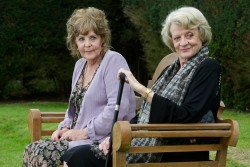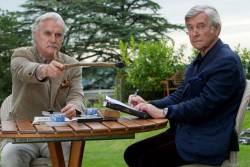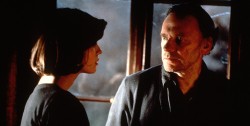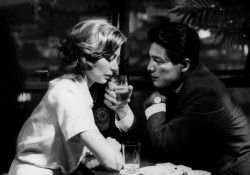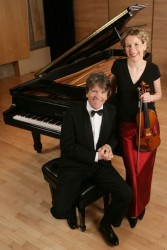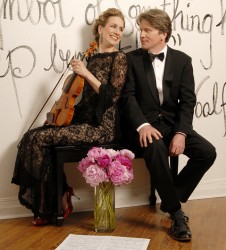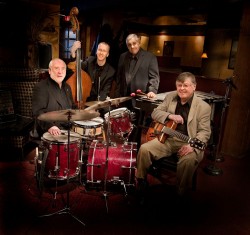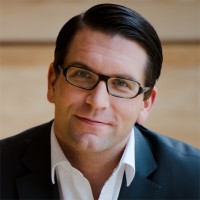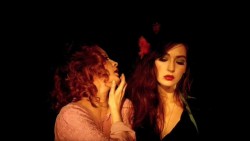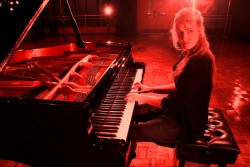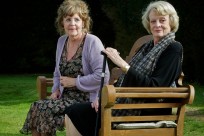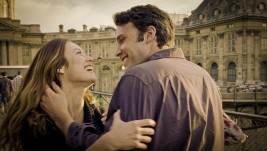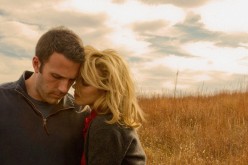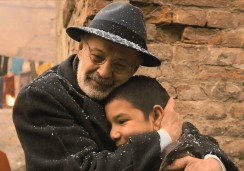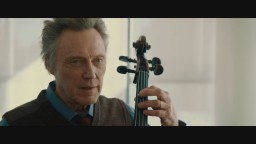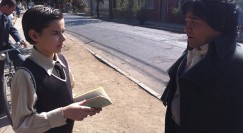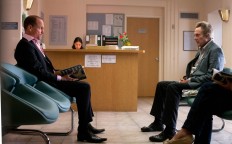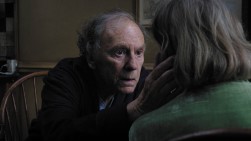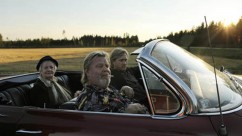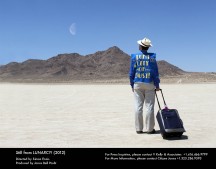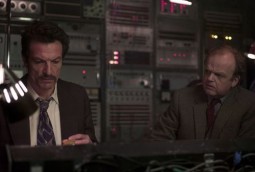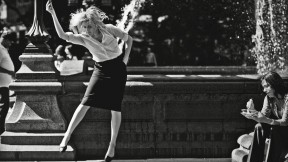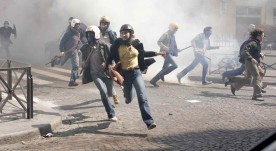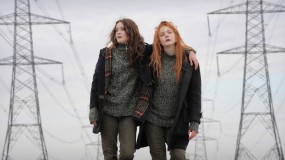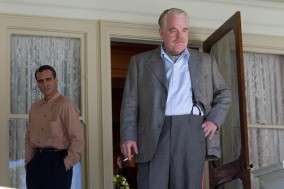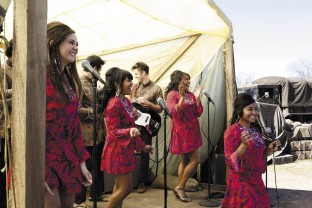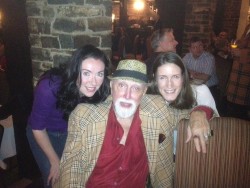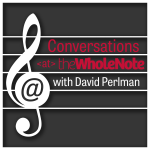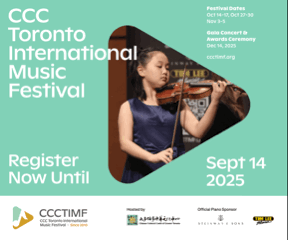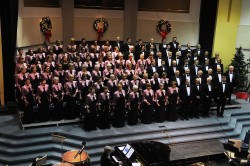 This season, for the first time, I ordered a Christmas gift for a family member online and I have since become obsessed with the convenience of online browsing when shopping around for everything from dog food to winter boots. So, I figure, why not use our online Messiah listings this year to shop around for the perfect performance of Handel’s great work? Although first performed in April of 1742, the Messiah now occupies a full season in the month before Christmas. This year, Ontario’s Messiah season lasts 24 days – precisely the time it took Handel to complete the original score’s 259 pages – and our listings include 26 ensembles presenting more than 50 performances in all manner of styles, in venues from Kingston to Waterford.
This season, for the first time, I ordered a Christmas gift for a family member online and I have since become obsessed with the convenience of online browsing when shopping around for everything from dog food to winter boots. So, I figure, why not use our online Messiah listings this year to shop around for the perfect performance of Handel’s great work? Although first performed in April of 1742, the Messiah now occupies a full season in the month before Christmas. This year, Ontario’s Messiah season lasts 24 days – precisely the time it took Handel to complete the original score’s 259 pages – and our listings include 26 ensembles presenting more than 50 performances in all manner of styles, in venues from Kingston to Waterford.
From the long-standing traditions of Tafelmusik's “Sing-Along Messiah” and the TSO's large-scale performance of the work to Pax Christie’s condensed and family-friendly “Children’s Messiah,” the choices are vast. As Handel authority Winton Dean wrote, “There is still plenty for scholars to fight over, and more than ever for conductors to decide for themselves…This applies not only to the choice of versions, but to every aspect of baroque practice, and of course there are often no final answers.”
So there are many variables to consider when searching for a version of the Messiah that inspires. Larger scale productions with a bigger chorus, such as the Toronto Symphony with the Toronto Mendelssohn Choir (December 18, 19, 21–23) the Kingston Symphony with the Kingston Choral Society (December 13) and the Ontario Philharmonic with the Amadeus Choir(December 18,19 and 21), promise exhilarating moments of grandeur and a spine-tingling “Hallelujah Chorus.” Certainly groups such as the Royal Choral Society and the Mormon Tabernacle Choir have created a tradition of mammoth productions of the piece and composers following Handel have re-orchestrated the Messiah to include a larger orchestra and beefier choir. Perhaps the most extravagant example of this tradition was the performance of the Messiah held at the former Crystal Palace in London, featuring a choir of 2,000 and an orchestra of 500! And why not? Handel himself stated “he saw all heaven before him” while composing the “Hallelujah Chorus.”
It is important to point out, however, that the Messiah was first performed under more modest circumstances. The first performance employed a choir of only 32 men and boys from two church choirs in Dublin. In the past few decades, there has been increased interest in smaller, more authentic productions of the work. The perfect example is the “Dublin Messiah,” the Aradia ensemble’s presentation of Handel’s original score (December 22) with a chamber choir and period instrument orchestra. Tafelmusik (December 19 to 22, with its “Sing-Along Messiah” December 23), Guelph Chamber Choir (December 22) and Arcady (various dates and locations) also employ a much smaller ensemble and period instruments for their Messiah performances, and more intimate Messiahs will also be presented by the Oakville Ensemble, Elora Festival Singers and Bach Elgar Choir.
Whether performed by mammoth choirs and orchestras or chamber choirs and small ensembles, the Messiah is a massive work in length. For those listeners hoping to experience the thrill of the Messiah’s greater moments without sitting through all 53 movements, there are many Christmas concerts featuring choice sections of the work alongside other holiday favourites. If that’s more your cup of eggnog, be sure to consider December’s concerts by the York Chamber Ensemble, Grace Church on-the-Hill, Blessed Trinity Choir, Cathedral Church of St. James, Orillia Wind Ensemble and Guelph Symphony Orchestra.
Finally, there are ensembles bringing the Messiah closer to their audiences and into the 21st century. Pax Christi Chorale presents its “Children’s Messiah,” a shorter, reworked, family-friendly version on December 8 and Tafelmusik and Orchestra Kingston give their audience a chance roll up their sleeves and participate in their sing-along Messiahs (December 23 and December 1 respectively). For those searching for a complete change of pace this season, Ballet Creole is celebrating its 11thseason of the “Soulful Messiah,” a dance piece merging tap, African-Caribbean, ballet, jazz and modern dance styles, set to the R&B Messiah by Quincy Jones, with performances in Toronto, North Bay and St. Catharines throughout the first part of the month.
With this many options, why not branch out and listen to the unique interpretations bestowed on the Messiah by so many of Ontario’s conductors? As an oboist I have, egocentrically, sometimes felt lukewarm toward the Messiah for its unusual lack of significant oboe lines (the oboe is usually favoured by Handel). However, when I do play the Messiah, the scant oboe part turns out to be a blessing; sitting tacitly for the majority of the piece, listening to the divine music around me, I am always reminded why this work is so widely performed by orchestras and choirs big and small, in communities far and wide.
So here's our list of the Messiahs to choose from this season – happy shopping, happy listening and happy holidays!
Messiah Listings
GTA:
Nov 30 8:00: Ballet Creole. Soulful Messiah. Tap, African-Caribbean, ballet, jazz and modern dance, performed to Quincy Jones’ R&B rendition of Handel’s Messiah. Fleck Dance Theatre, Harbourfront Centre, 235 Queens Quay W. 416-973-4000. $35–$45; $20–$25(sr/st). Also Dec 1, 2(mat). 7 (St. Catharines), 11 (North Bay), 13 (Markham), 15 (Mississauga).
Dec 01 7:30: York Chamber Ensemble.Handel in the Snow. Handel: Messiah (sing-along); Tchaikovsky: Nutcracker Suite; Courtney: A Musicological Journey Through the Twelve Days of Christmas. Trinity Festival Chorus, Tony Browning, conductor. Trinity Anglican Church, 79 Victoria St., Aurora. 905-?? $20; $15(sr/st).
Dec 01 8:00: Ballet Creole. Soulful Messiah. Tap, African-Caribbean, ballet, jazz and modern dance, performed to Quincy Jones’ R&B rendition of Handel’s Messiah. Fleck Dance Theatre, Harbourfront Centre, 235 Queens Quay W. 416-973-4000. $35–$45; $20–$25(sr/st). Also Nov 30, Dec 2(mat).
Dec 02 3:00: Ballet Creole. Soulful Messiah. See Dec 1.
Dec 08 4:00: Pax Christi Chorale.The Children’s Messiah. Abridged version of Handel’s oratorio featuring child-friendly narration and audience carols. Megan Harris, soprano; Vicky St. Pierre, mezzo; Lenard Whiting, tenor; Michael Robert-Broder, baritone; Pax Christi Chorale; St. Mary Magdalene Gallery choir; and others. Church of St. Mary Magdalene,477 Manning Ave. 416-491-8542. PWYC; free(child).
Dec 08 7:30: Oakville Ensemble.Messiah. Handel. Mary Mother of God Church, 2745 Ridge Trail N., Oakville. 905-825-9740. $30; $25(sr); $15(st); $60(family). Non-perishable food items collected for Salvation Army. Also Dec 9(mat, St. John’s United Church, Oakville).
Dec 09 3:00: Oakville Ensemble.Messiah Sing-Along. Handel. St. John’s United Church, 262 Randall St., Oakville. 905-825-9740. $30; $25(sr); $15(st); $60(family). Non-perishable food items collected for Salvation Army. Also Dec 8(eve, Mary Mother of God Church, Oakville).
Dec 13 8:00: Ballet Creole. Soulful Messiah. Tap, African-Caribbean, ballet, jazz and modern dance, performed to Quincy Jones’ R&B rendition of Handel’s Messiah. Flato Markham Theatre171 Town Centre Blvd., Markham. 905-305-7469. $49–$54. Also Nov 30, Dec 1, 2 (Toronto), 7 (St. Catharines), 11 (North Bay), 15 (Mississauga)
Dec 14 7:30: Oakville Choral Society. Messiah. Handel. With guest soloists and orchestra. Anne Marie Leonard, accompanist; David Bowser, conductor. ClearView Christian Reformed Church, 2300 Sheridan Garden Dr., Oakville. 905-827-6129. $30; $25(adv); $15(st); free(under 12). Also Dec 15.
Dec 14 7:30: Cathedral Church of St. James. Handel’s Messiah and Vivaldi’s Gloria. Handel: Messiah, part 1; Vivaldi: Gloria. 106 King St. E. 416-364-7865. $40; $35(sr/st).
Dec 15 7:30: Grace Church on-the-Hill. Messiah at Grace Church on-the-Hill. Excerpts from Messiah. Guests: Cantabile Chamber Singers. 300 Lonsdale Rd. 416-488-7884. $20; $15(sr/st).
Dec 15 7:30: Kindred Spirits Orchestra. Handel’s Glorious Messiah. With full symphony orchestra orchestration by Mozart. Rebeca Whelan-Martin, soprano; Claudia Lemcky, mezzo; Stephan Harland, tenor; Andrew Tees, baritone; Village Voices, Joan Andrews, conductor; Kristian Alexander, conductor. Flato Markham Theatre, 171 Town Centre Blvd., Markham. 905-305-7469. $28; $18(sr/st). 6:45: Pre-concert chat.
Dec 15 7:30: Oakville Choral Society. Handel’s Messiah. See Dec 14.
Dec 15 8:00: Ballet Creole. Soulful Messiah. Tap, African-Caribbean, ballet, jazz and modern dance, performed to Quincy Jones’ R&B rendition of Handel’s Messiah. Meadowvale Theatre, 300 City Centre Dr., Mississauga. 905-615-4720. $31.50; $26.50(sr/st). 7:00: Pre-show reception. Also Nov 30, Dec 1, 2 (Toronto), 7(St. Catharines) 11 (North Bay), 13 (Markham).
Dec 16 3:00: Blessed Trinity Choir. Gaudete! Family Christmas concert. Holst: Christmas Day; Handel: Messiah (excerpts). Blessed Trinity Church, 3220 Bayview Ave. 416-733-0210. $15; $10(st under 21).
Dec 16 3:00: Humber Valley United Church. Handel’s Messiah. Humber Valley United Church Concert Choir with guest soloists and members of the Etobicoke Philharmonic Orchestra; Paul Chant, conductor. 76 Anglesey Boulevard. 416-231-2263. $25; $20(sr); free(under 12).
Dec 18 7:30: Ontario Philharmonic. Messiah. Handel. Jennifer Taverner, soprano; Leigh-Anne Martin, alto; Zach Finkelstein, tenor; Justin Welsh, baritone; Amadeus Choir, Lydia Adams, director. Regent Theatre, 50 King St. E., Oshawa. 416-443-9737. $45–$56; $34–$45(st/youth). Also Dec 19; Dec 21 (Toronto).
Dec 18 8:00: Toronto Symphony Orchestra. Toronto’s Favourite Messiah. Handel: Messiah. Yulia Van Doren, soprano; Daniel Taylor, countertenor; Michael Schade, tenor; Russell Braun, baritone; Toronto Mendelssohn Choir; Nicholas McGegan, conductor. Roy Thomson Hall, 60 Simcoe St. 416-593-4828 or 416-593-0688(Chinese). $38–$105. Also Dec 19, 21, 22, 23(mat).
Dec 19 7:30: Ontario Philharmonic. Messiah. See Dec 18.
Dec 19 7:30: Tafelmusik. Messiah. Handel. Joanne Lunn, soprano; Allyson McHardy, mezzo; Aaron Sheehan, tenor; Douglas Williams, baritone; Tafelmusik Baroque Orchestra and Chamber Choir, Ivars Taurins, director. Koerner Hall, 273 Bloor St. W. 416-408-0208. $47–$112; $37–$99(sr); $29–$99(35 and under). Also Dec 20–22; sing-along Messiah Dec 23(mat, Massey Hall).
Dec 19 8:00: Toronto Symphony Orchestra. Toronto’s Favourite Messiah. See Dec 18.
Dec 20 7:30: Tafelmusik. Messiah. See Dec 19.
Dec 21 7:30: Tafelmusik. Messiah. See Dec 19.
Dec 21 8:00: Ontario Philharmonic. Messiah. Handel. Jennifer Taverner, soprano; Leigh-Anne Martin, alto; Zach Finkelstein, tenor; Justin Welsh, baritone; Amadeus Choir, Lydia Adams, director. Christ Church Deer Park, 1570 Yonge St. 416-443-9737. $35–$45; $25–$35(st/youth). Also Dec 18, 19 (Oshawa).
Dec 21 8:00: Toronto Symphony Orchestra. Toronto’s Favourite Messiah. See Dec 18.
Dec 22 7:30: Tafelmusik. Messiah. See Dec 19.
Dec 22 8:00: Aradia Ensemble. The Dublin Messiah. Handel. Claire de Sévigné, soprano; Marion Newman, mezzo; David Menzies, tenor; Peter McGillivray, baritone; Michael Fedyshyn, trumpet. Glenn Gould Studio, 250 Front St. W. 647-960-6650. $35; $20(sr/st).
Dec 22 8:00: Toronto Symphony Orchestra. Toronto’s Favourite Messiah. See Dec 18.
Dec 23 2:00: Tafelmusik. Sing-Along Messiah. Handel. Joanne Lunn, soprano; Allyson McHardy, mezzo; Aaron Sheehan, tenor; Douglas Williams, baritone; Tafelmusik Baroque Orchestra and Chamber Choir, Ivars Taurins, director. Massey Hall, 178 Victoria St. 416-872-4255. $29–$45.
Dec 23 3:00: Toronto Symphony Orchestra. Toronto’s Favourite Messiah. See Dec 18.
BEYOND GTA
Dec 01 7:30: Orchestra Kingston. Sing-Along Messiah. Handel. Salvation Army Citadel, 816 Centennial Dr., Kingston. 613-533-6000 x79302. $15; $10(sr/st). Non-perishable food donations welcome.
Dec 02 3:00: Guelph Chamber Choir. Carols for Christmas. Rutter: Dancing Day; Telfer: Noel; Handel: Hallelujah from Messiah. Lori Gemmell, harp; Susan Stephenson, flute; Gerald Neufeld, conductor. St. George’s Anglican Church, 99 Woolwich St., Guelph. 519-763-3000. $25; $10(st); $5(youth).
Dec 07 7:30: Ballet Creole. Soulful Messiah. David S. Howes Theatre, Brock University, 500 Glenridge Ave., St Catharines. 905-688-5550 x3257. $16-$46. Also Nov 30, Dec 1, 2 (Toronto), 11 (North Bay), 13 (Markham), 15 (Mississauga).
Dec 08 7:30: Arcady. A Baroque Messiah. Ronald Beckett, conductor. Immanuel Orthodox Reformed Church, 2900 4 Ave., Jordan. 905-892-9160. $25. Fundraiser for EDUDEO Ministries.
Dec 08 7:30: Chorus Niagara. Messiah. Handel. With the Talisker Players on period instruments. Jacqueline Woodley, soprano; David Trudgen, countertenor; Isaiah Bell, tenor; Anthony Cleverton, baritone. Mountainview Christain Reformed Church, 290 Main St. E., Grimsby. 905-688-5550. $35; $33(sr); $15(st). 6:45: Pre-concert chat. Also Dec 9 (St. Catharines).
Dec 08 7:30: Menno Singers. Messiah. Handel. Bethany Hörst, soprano; Jennifer Enns Modolo, mezzo; Christopher Enns, tenor; Adrian Kramber, baritone; Mennonite Mass Choir; Kitchener-Waterloo Symphony Orchestra; Peter Nikiforuk, director. Centre in the Square, 101 Queen St. N., Kitchener. 519-578-1570 or 1-800-265-8977. $20–$50.
Dec 08 7:30: Orillia Wind Ensemble. Christmas Prelude. Handel: Excerpts from Messiah; other works. Guests: Orillia Vocal Ensemble; Alyson Spina, soprano. St. Paul’s United Church, 62 Peter St. N., Orillia. $20; $17(sr); $5(st).
Dec 09 2:30: Chorus Niagara Messiah. Handel. With the Talisker Players on period instruments. Jacqueline Woodley, soprano; David Trudgen, countertenor; Isaiah Bell, tenor; Anthony Cleverton, baritone. Cavalry Church, 89 Scott St., St. Catharines. 905-688-5550. $35; $33(sr); $15(st). 1:45: Pre-concert chat. Also Dec 8 (Grimsby).
Dec 09 2:30: Orchestra Kingston. Sing-Along Messiah. Handel. Salvation Army Citadel, 816 Centennial Dr., Kingston. 613-389-3525. $15/$10(sr/st).
Dec 09 3:00: Elora Festival. Messiah. Elora Festival Singers and Orchestra; Noel Edison, conductor. St. Joseph’s Church, 760 St. David St., Fergus. 519-846-0331. $40HST.
Dec 09 3:00: Guelph Symphony Orchestra. Holiday Classics. Vivaldi: Winter from the Four Seasons; Handel: Messiah (selections); and other seasonal music. Jacques Israelievitch, violin and conductor; guests: Guelph Chamber Choir; Suzuki String School of Guelph. River Run Centre, 35 Woolwich St., Guelph. 519-763-3000. $35; $17(under 30); $10(child); $5(high school).
Dec 09 3:00: Guelph Symphony Orchestra. Holiday Classics. Vivaldi: Winter from the Four Seasons; Handel: Messiah (selections); and other seasonal music. Jacques Israelievitch, violin and conductor; guests: Guelph Chamber Choir; Suzuki String School of Guelph. River Run Centre, 35 Woolwich St., Guelph. 519-763-3000. $35; $17(under 30); $10(child); $5(high school).
Dec 10 7:30: Arcady. Messiah. Handel. Janet Obermeyer, soprano; Lauren Segal, mezzo; David Curry, tenor; Jason Howard, baritone; guest: National Academy Orchestra of Canada, Boris Brott, conductor. St. Patrick’s Roman Catholic Church, 440 King St. E., Hamilton. 1-888-475-9377. $27, $22(sr), $10(st).Also Dec 11 (Burlington).
Dec 11 7:30: Arcady. Messiah. Handel. Janet Obermeyer, soprano; Lauren Segal, mezzo; David Curry, tenor; Jason Howard, baritone; guest: National Academy Orchestra of Canada, Boris Brott, conductor. Burlington Performing Arts Centre, 440 Locust St., Burlington. 1-888-475-9377. $29; $24(sr); $10(st). Also Dec 10 (Hamilton).
Dec 11 7:30: Ballet Creole. Soulful Messiah. Capitol Centre, 150 Main St. E., North Bay. 705-474-4747. $30–$35; $20(st/under 12). Also Nov 30, Dec 1, 2 (Toronto), 7 (St. Catharines), 13 (Markham), 15 (Mississauga).
Dec 13 7:30: Kingston Symphony. Hallelujah! Handel: Messiah. Monica, Whicher, soprano; Erinn Roberts, mezzo; Nils Brown, tenor; Benjamin Covey, baritone; Kingston Choral Society Kingston Gospel Temple, 2295 Princess St., Kingston. 613-530-2050. $20–$30.
Dec 14 7:30: Arcady. A Baroque Messiah. See Dec.8. Old Town Hall, 76 Main St.S. Waterford. 519-443-0113. $25. Also Dec 15 (Cayuga).
Dec 14 7:30: Bach Elgar Choir. Messiah. Handel: Messiah. Jennifer Taverner, soprano; Mia Lennox Williams, alto; Thomas Macleay, tenor; Jesse Clark, bass; Hamilton Philharmonic Orchestra; Alex Cann, conductor. Melrose United Church, 86 Homewood Ave., Hamilton. 905-527-5995. $35.
Dec 15 7:30: Arcady. A Baroque Messiah. St. Stephen’s Roman Catholic Church, 15 Ottawa St. S., Cayuga. 905-772-5314. $30. Also Dec 14 (Waterford).
Dec 16 3:00: Peterborough Singers. Messiah. Handel. Vicki St. Pierre, mezzo; Graham Thomson, tenor; Curtis Sullivan, baritone; Ian Sadler, organ. George Street United Church, 534 George St. N., Peterborough. 705-745-1820. $30; $10(st). Also Dec 17(eve).
Dec 17 7:30: Peterborough Singers. Messiah. See Dec 16 (mat).
Dec 22 8:00: Guelph Chamber Choir. Handel’s Messiah. Meredith Hall, soprano; Erica Iris Huang, mezzo; Graham Thomson, tenor; Matthew Pauls, baritone; Gerald Neufeld, conductor; guest: Musica Viva Orchestra. River Run Centre, 35 Woolwich St., Guelph. 519-763-3000. $33; $10(st); $5(eyeGO). 7:00: Pre-concert talk with Christopher Dawes.
Dec 23 3:00: Grand River Chorus. Messiah. Handel. With baroque orchestra. Leslie Bouza, soprano; Daniel Cabena, countertenor; Andrew Haji, tenor; Andrew Tees, bass. St. Pius Roman Catholic Church, 9 Waverly St., Brantford. 519-753-3405. $25; $20(st); $5(under 18).


